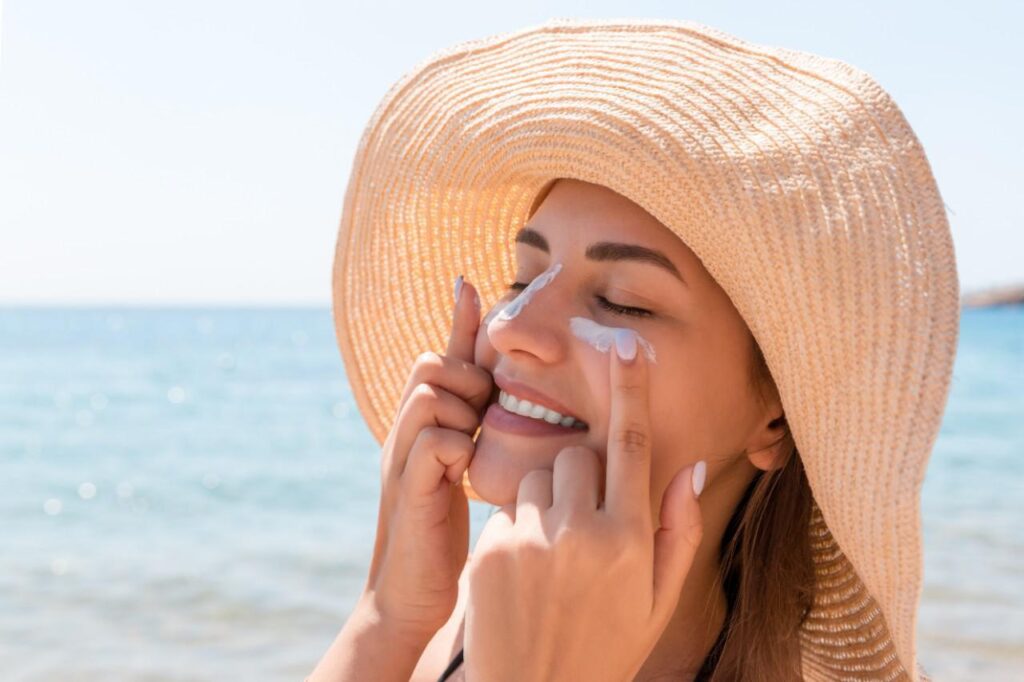For many of us, the skin is our first line of defense against the elements. But sometimes, it can feel like our skin is working against us—especially when we suffer from breakouts or rashes. At-home skin care tips can help keep your skin healthy and looking great.
At-Home Skin Care Tips
- Use a gentle cleanser.
- Moisturize your skin with a light lotion or cream.
- Avoid harsh soaps, which can dry out your skin or cause irritation. If you have sensitive or dry skin, try using a mild soap alternative such as Aveeno® Daily Moisturizing Bar for Sensitive Skin.
- Wear sunscreen daily to prevent sunburns and melanoma, the deadliest form of skin cancer. The American Academy of Dermatology recommends applying at least 1 ounce (2 tablespoons) of sunscreen with SPF 30+ every two hours while outdoors — even on cloudy days — and reapplying every 40 minutes when swimming or sweating heavily.*
- Eat well: A healthy diet filled with fruits and vegetables can help keep your immune system strong so it’s better able to fight off any viruses that may cause cold sores.* Exercise regularly: Exercise helps reduce stress levels, which have been linked to outbreaks in some cases.* Consider taking an honest look at how much time you spend looking at screens like computers and cellphones (and yes—even tablets). Staring at computer monitors has been shown to increase melatonin production in the body; this may be one reason why people who work night shifts are more likely than others (including shift workers who work during regular daytime hours)
Check Your Symptoms
Skin problems can be tricky to identify, but not impossible. If you notice redness, swelling, itching or tenderness in the skin area where you use a product—like your face—then it’s probably time to get your doctor involved. You should also see a doctor if you have any blisters, bleeding (even light bleeding), crusting or oozing from the area of application. If there is no sign of irritation or injury but still feels like something is wrong with your skin after using the product and feeling an uncomfortable sensation on that part of your body, then it’s best to call up a friend who has some experience in this field and ask them for advice on how best to proceed based on what they’re able to see happening with your skin right now.”
Know Your Risk Factors
- Age. As you age, your skin becomes thinner and more susceptible to sun damage.
- Family history. If you have a parent or sibling with a history of melanoma, your risk is higher than average.
- Skin color. Redheads and blondes tend to get more sunburns than brunettes and darker-skinned people do—but that doesn’t mean they won’t get melanoma!
- Sun exposure. The more time you spend in the sun without sunscreen, the higher your risk of developing this disease (and all other types of skin cancers).
- Lifestyle habits. Smoking or drinking alcohol increases the risks associated with UV rays, as does having an indoor tanning habit or spending time outside during midday hours when there is no shade available for protection from harmful rays at ground level (when clouds block out direct sunlight).
Takeaway:
- Protect the skin you’re in. As we age, our skin loses its radiance and suppleness. Try to protect your skin from further damage by avoiding harsh chemicals, using sunscreen, and getting plenty of sleep.
- Get checked out. If you notice any changes in your skin—whether bumps or wrinkles—see a dermatologist right away (and don’t forget to bring this guide!).
- Look out for signs of cancerous cells on your body: they include asymmetry (the mole isn’t shaped like an oval), irregular borders (the mole doesn’t have clean lines), color variation (moles that aren’t pink or tan may be melanomas), elevation above the surface of normal skin moles), bleeding or oozing pus within the first 24 hours after injury), sudden itching and painless ulceration in a mole that has been present for years).
Conclusion
We hope you found our advice on the best ways to protect your skin. It’s important to take care of yourself, but it’s also important to know when something is wrong so that you can get help ASAP. So let us know if any of these tips worked for you in the comments below!



